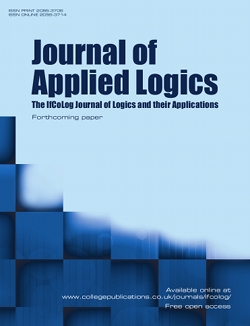 | Does Negative Mass Imply Superluminal Motion?
An Investigation in Axiomatic Relativity Theory
J. X. Madaráz, G. Székely and M. Stannett
Formalization of physical theories using mathematical logic allows us to discuss the assumptions on which they are based, and the extent to which those assumptions can be weakened. It also allows us to investigate hypothetical claims, and hence identify experimental consequences by which they can be tested. We illustrate the potential for these techniques by reviewing the remarkable growth in First Order Relativity Theory (FORT) over the past decade, and describe the current state of the art in this field. We take as a running case study the question ``textit{Does negative mass imply superluminal motion?}'', and show how a many-sorted first-order theory based on just a few intuitively obvious, but rigorously expressed, axioms allows us to formulate and answer this question in mathematically precise terms.
|

